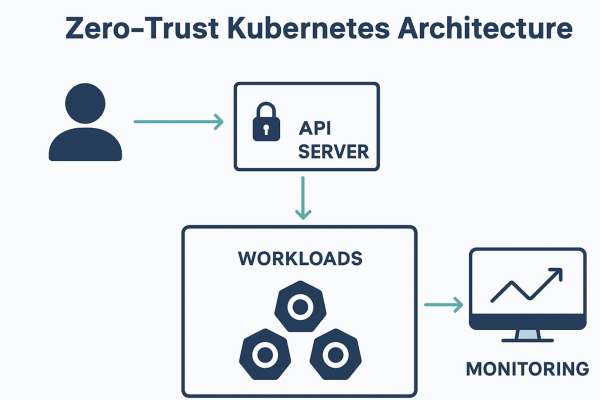How Does AWS Global Infrastructure Work?
Amazon Web Services (AWS) is one of the most popular cloud computing platforms, providing a vast array of services to businesses and developers worldwide. At the heart of its success lies the AWS global infrastructure, which is designed to deliver high availability, security, and scalability. In this blog, we will explore how AWS global infrastructure works, offering a detailed overview while keeping the explanations simple and informative.
Introduction to AWS Global Infrastructure
The AWS global infrastructure is a network of data centers spread across the globe, designed to deliver AWS services reliably and securely. It is built with the principles of redundancy, fault tolerance, and high availability, ensuring that AWS can meet the demands of its customers. The AWS global infrastructure comprises regions, availability zones, edge locations, and local zones, each playing a critical role in delivering cloud services.
Key Components of AWS Global Infrastructure
Regions
- Definition: A region is a physical location in the world where AWS operates multiple data centers. Each region is entirely independent and isolated from the others.
- Purpose: Regions enable customers to deploy applications and services closer to their end-users, reducing latency and improving performance.
- Examples: AWS has regions in North America (e.g., US East – N. Virginia), Europe (e.g., EU – Ireland), Asia Pacific (e.g., APAC – Tokyo), and many other parts of the world.
Availability Zones (AZs)
- Definition: Availability zones are distinct locations within a region, each with its own power, networking, and connectivity. An Availability Zone (AZ) is made up of one or more data centers..
- Purpose: AZs are designed to be isolated from failures in other AZs. They provide redundancy and fault tolerance, allowing applications to remain available even if one AZ goes down.
- Examples: The US East (N. Virginia) region has six availability zones, each identified by a letter, such as us-east-1a, us-east-1b, etc.
Edge Locations
- Definition: Edge locations are data centers that cache content closer to end-users. They are part of the Amazon CloudFront content delivery network (CDN).
- Purpose: Edge locations reduce latency and improve the performance of static and dynamic content delivery by caching data closer to the user.
- Examples: AWS has over 300 edge locations worldwide, located in major cities like New York, London, Tokyo, and Sydney.
Local Zones
- Definition: Local zones are extensions of AWS regions that provide additional compute and storage resources closer to end-users in specific locations.
- Purpose: Local zones are ideal for applications that require low latency or need to comply with local data residency requirements.
- Examples: AWS Local Zones are available in cities like Los Angeles, Boston, and Houston.
How AWS Global Infrastructure Works?
1. Redundancy and Fault Tolerance
One of the fundamental principles of AWS global infrastructure is redundancy. By spreading resources across multiple regions and availability zones, AWS ensures that failures in one location do not affect the overall availability of services. Here’s how redundancy and fault tolerance are achieved:
- Multi-AZ Deployments: AWS encourages customers to deploy applications across multiple AZs within a region. This setup ensures that if one AZ experiences an outage, the application can continue running in other AZs.
- Cross-Region Replication: For disaster recovery and data redundancy, AWS offers cross-region replication services for databases (e.g., Amazon RDS) and storage (e.g., Amazon S3). This allows data to be replicated to a different region, ensuring that a regional failure does not result in data loss
2. High Availability
High availability is a core feature of AWS global infrastructure. By designing services to run in multiple AZs and providing automated failover mechanisms, AWS ensures that applications remain available even in the event of hardware or software failures. Key components contributing to high availability include:
- Elastic Load Balancing (ELB): ELB automatically distributes incoming application traffic across multiple targets (e.g., EC2 instances) in different AZs, ensuring high availability and fault tolerance.
- Auto Scaling: Auto Scaling automatically adjusts the number of compute resources based on demand, ensuring that applications have the necessary capacity to handle traffic spikes and maintain performance.
3. Security
Security is paramount in AWS global infrastructure. AWS employs multiple layers of security measures to protect data and applications, including:
- Physical Security: AWS data centers are protected by strict physical security measures, such as biometric controls, surveillance, and access control mechanisms.
- Network Security: AWS uses advanced network security features like firewalls, encryption, and Virtual Private Cloud (VPC) to isolate resources and protect data in transit.
- Compliance: AWS global infrastructure complies with numerous industry standards and certifications, including ISO 27001, SOC 1/2/3, and GDPR, ensuring that customers can meet their regulatory requirements
4. Scalability
Scalability is another critical aspect of AWS global infrastructure. AWS services are designed to scale seamlessly, allowing customers to handle increased workloads without compromising performance. Key scalability features include:
- Elastic Compute Cloud (EC2): EC2 instances can be launched and terminated on-demand, providing flexible and scalable compute capacity.
- Amazon S3: S3 offers virtually unlimited storage capacity, enabling customers to store and retrieve any amount of data.
- Amazon RDS: RDS automatically scales database instances based on workload, ensuring that databases can handle varying levels of traffic.
5. Global Reach
AWS global infrastructure enables customers to deploy applications and services worldwide, reaching users in different regions with low latency and high performance. Key features supporting global reach include:
- Amazon CloudFront: CloudFront is a CDN that caches content at edge locations, reducing latency and improving performance for users globally.
- AWS Global Accelerator: Global Accelerator uses the AWS global network to route traffic to the optimal endpoint, improving performance and availability for global applications.
Conclusion
AWS global infrastructure is designed to provide high availability, security, scalability, and global reach. By leveraging regions, availability zones, edge locations, and local zones, AWS ensures that customers can deploy applications and services that meet their performance, compliance, and scalability requirements.
Understanding how AWS global infrastructure works is essential for businesses and developers looking to make the most of AWS services. By considering factors like redundancy, fault tolerance, high availability, security, scalability, and global reach, you can design and deploy robust applications that deliver a superior user experience.
Whether you’re running an e-commerce platform, media streaming service, or enterprise application, AWS global infrastructure provides the tools and resources you need to succeed in the cloud.
Author






